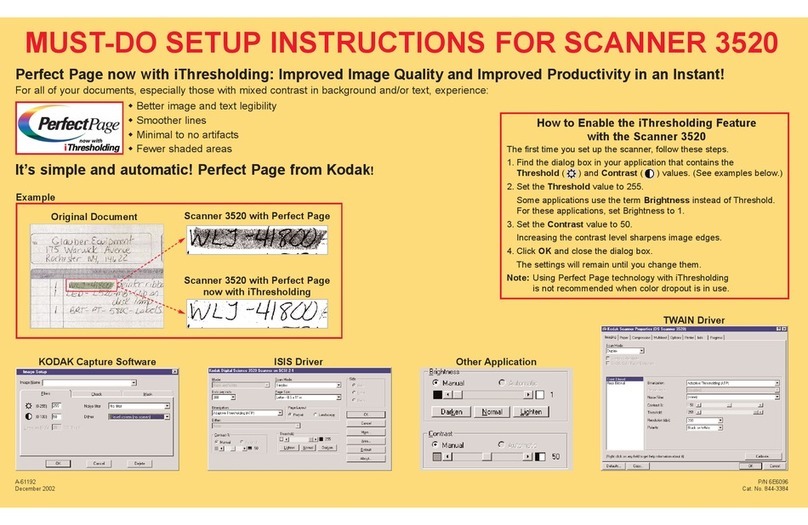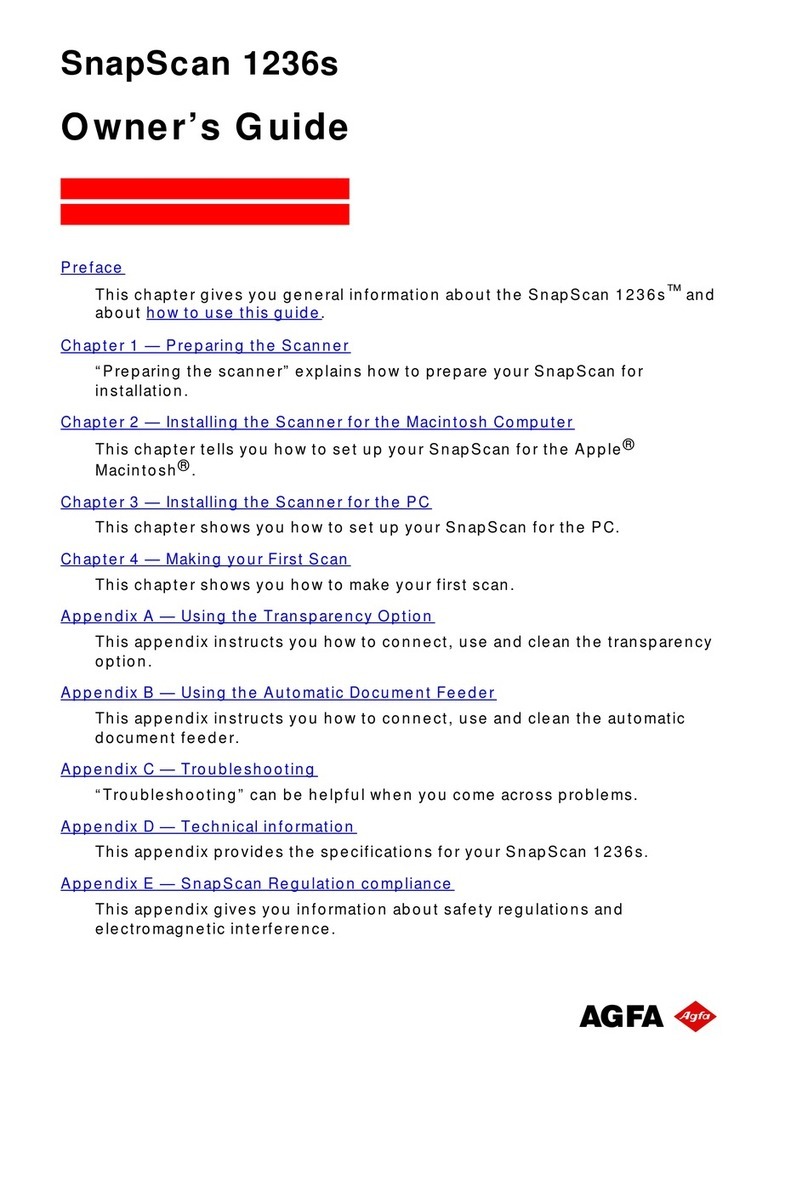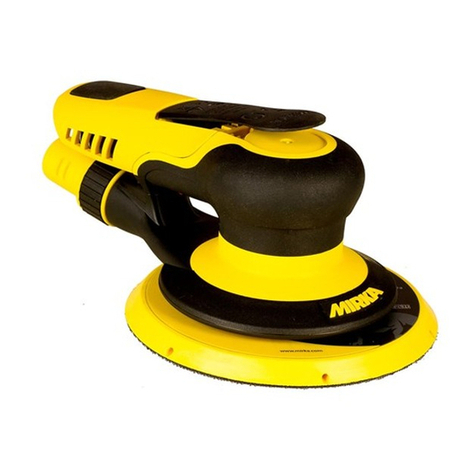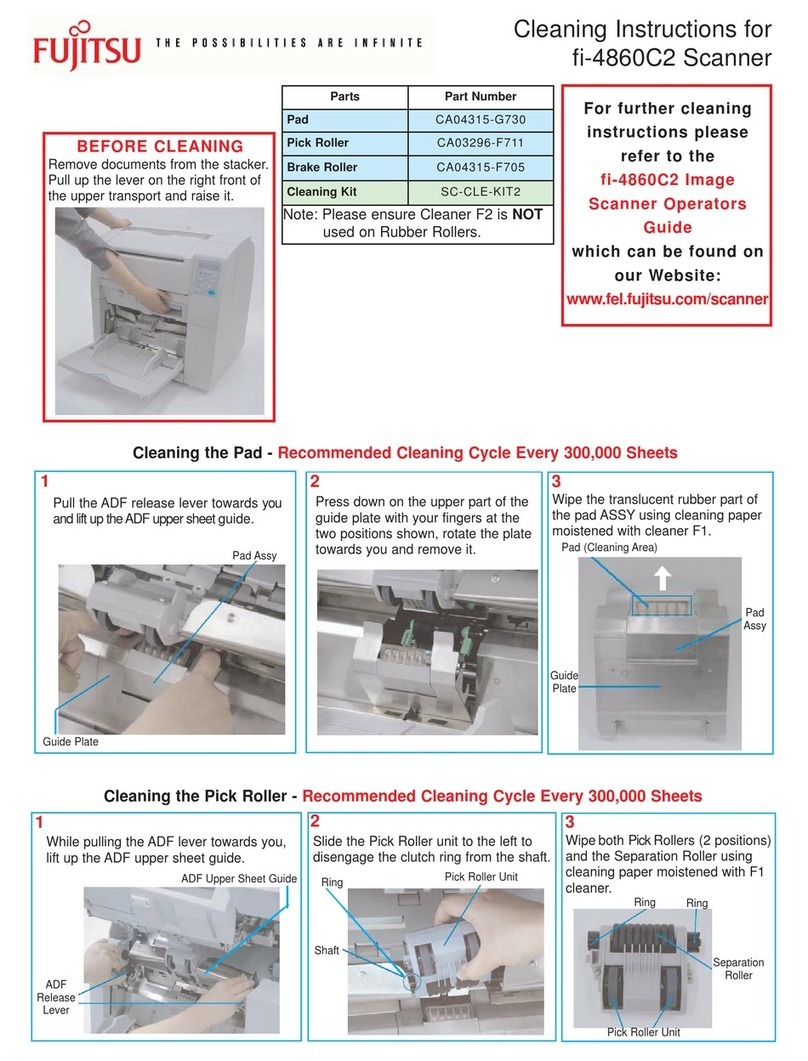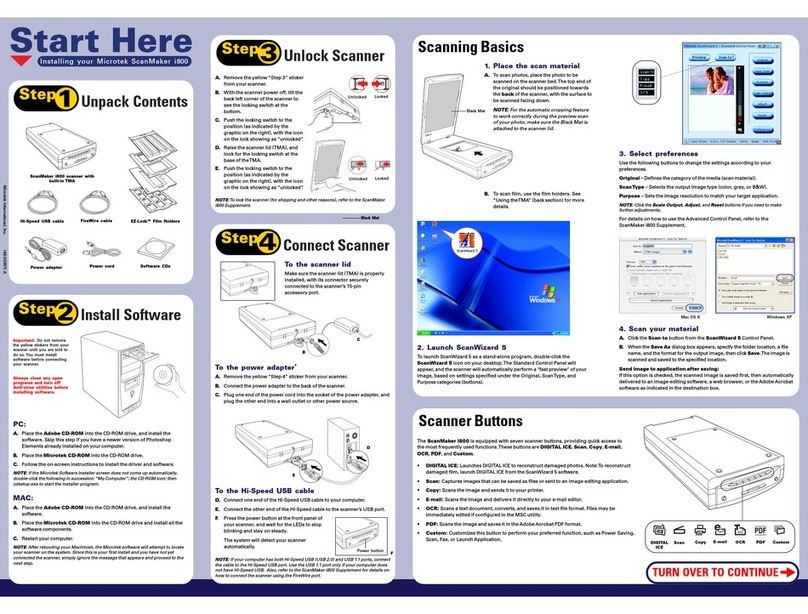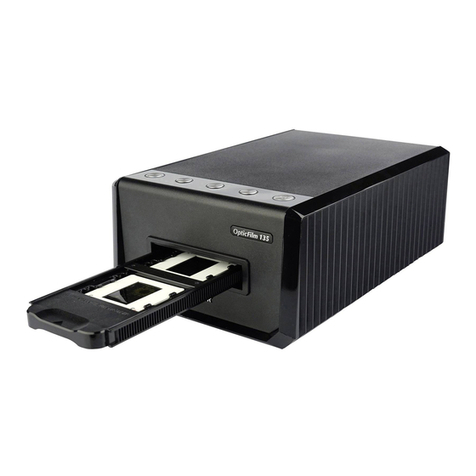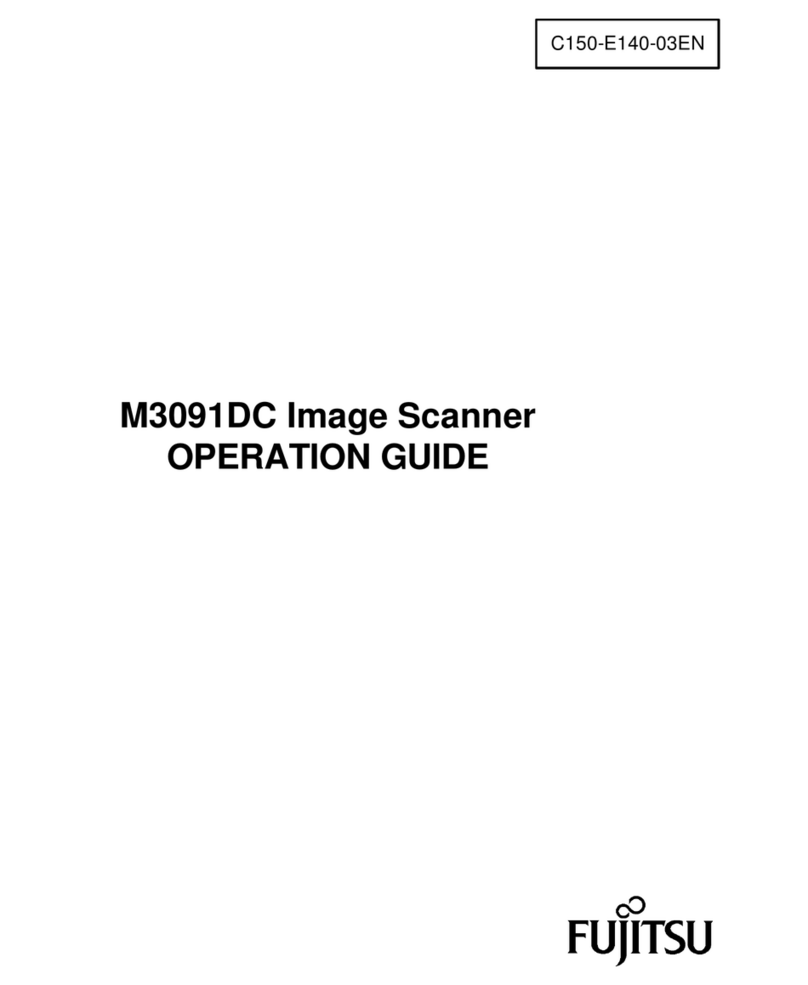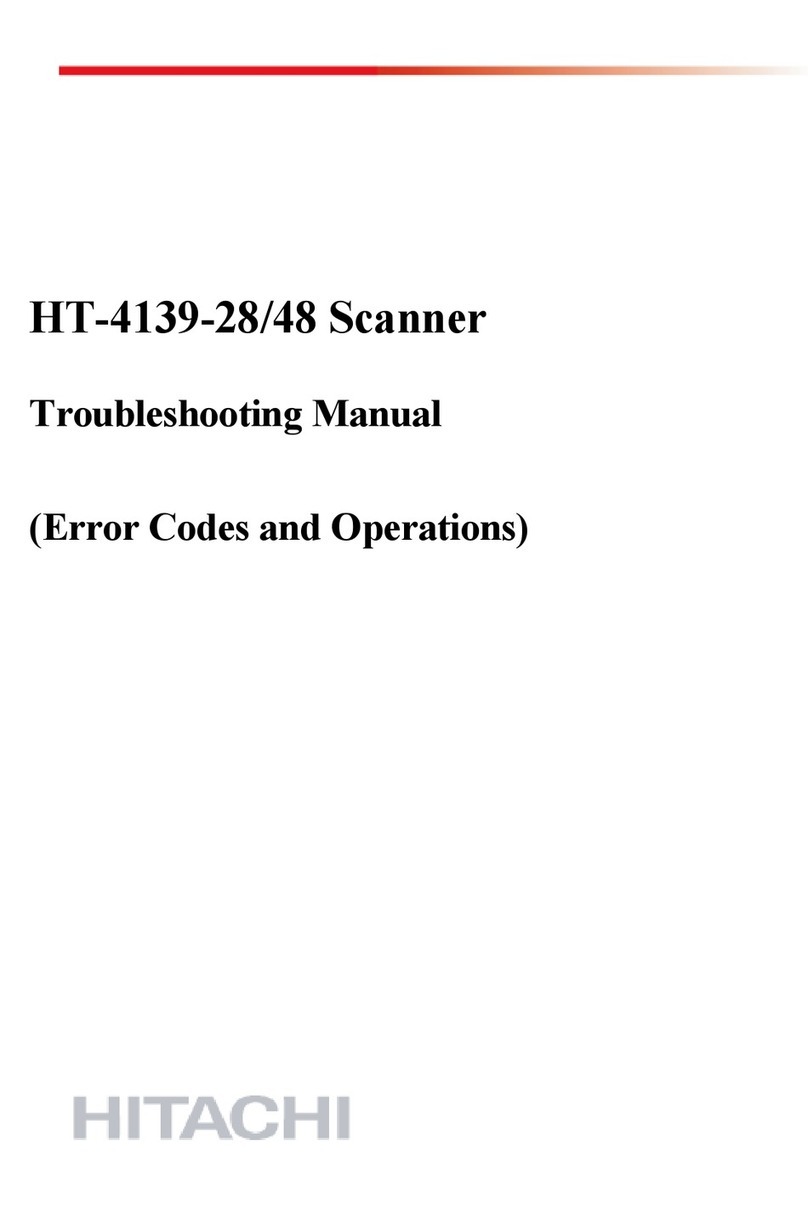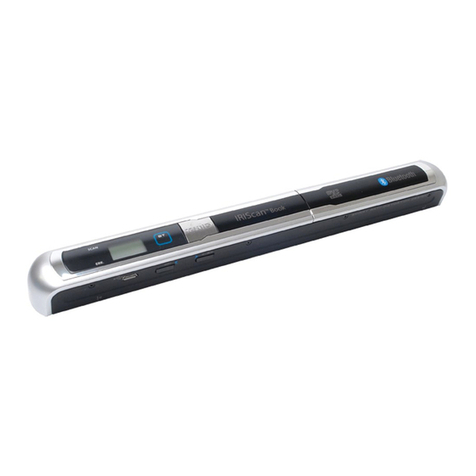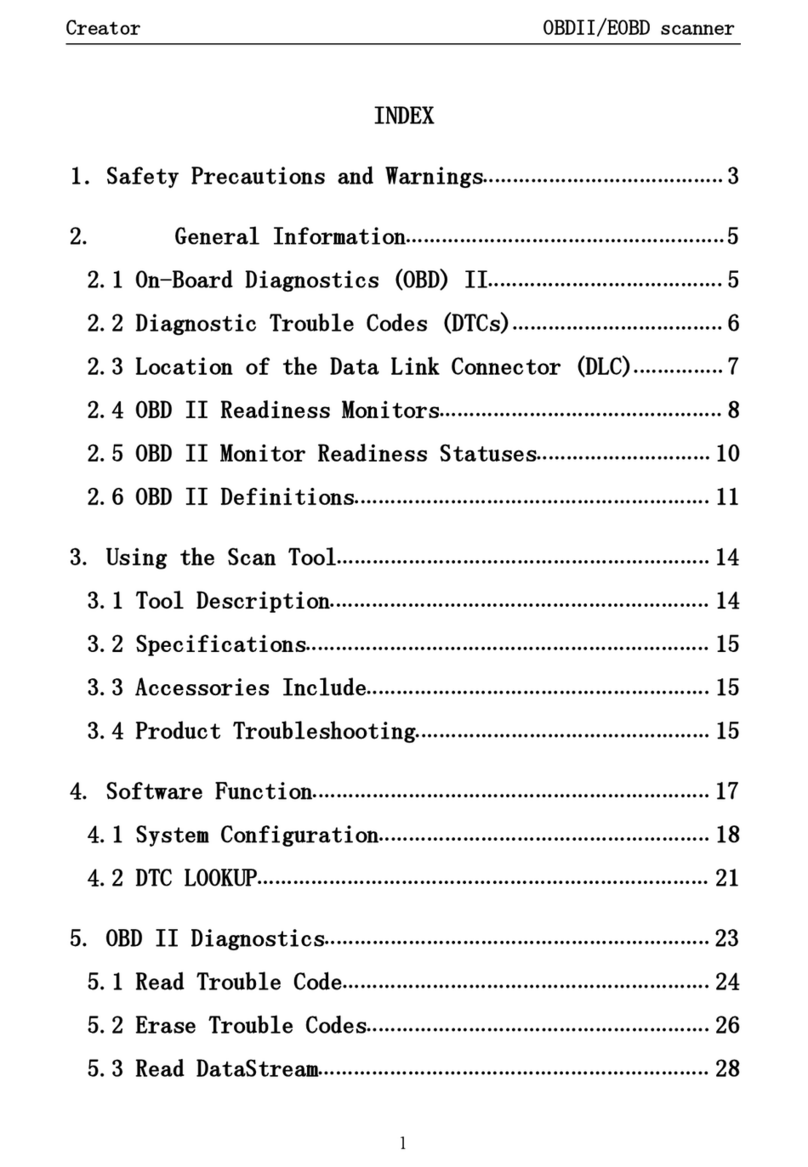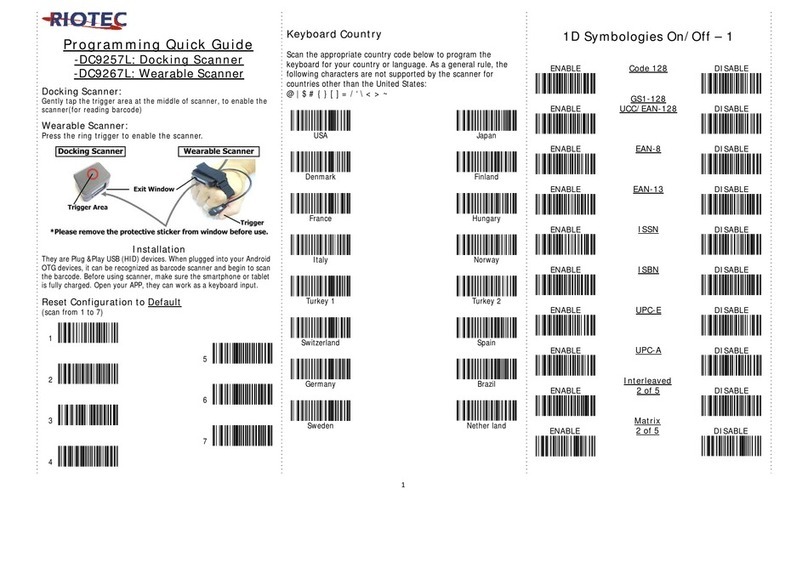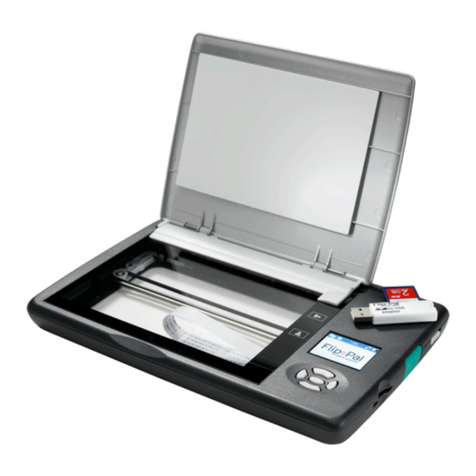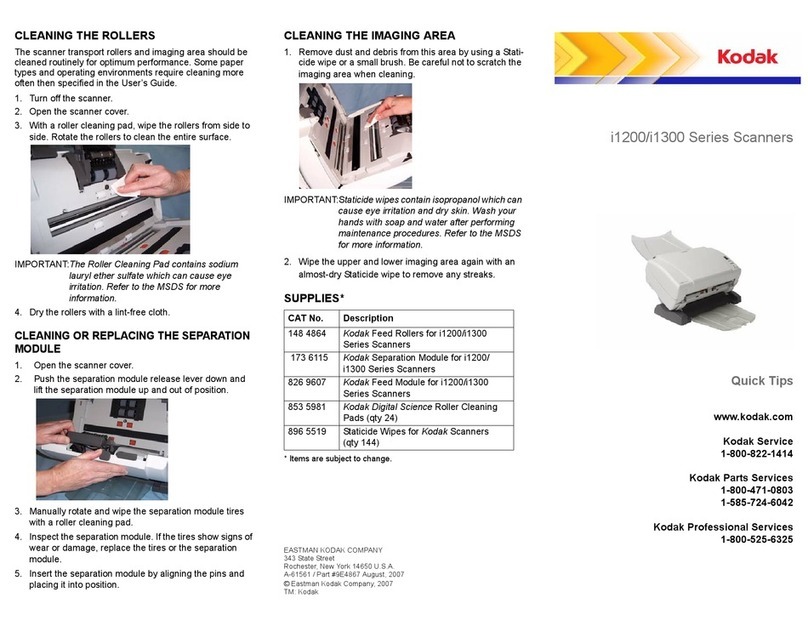InfraScan 2000 User manual

INFRASCAN Infrascanner Model 2000 Operator Manual
INFRASCAN, INC. VERSION 1 Page 1 of 41
Infrascanner Model
2000
Operator
Manual
Distribution authorized to the Department of Defense and U.S. DoD contractors only;
Administrative or Operational Use, 13 February 2014. Other U.S. requests shall be
referred to Commander, MARCORSYSCOM (PM CSS), 2200 Lester Street, Quantico,
VA 22134-6050
DISCLAIMER
Neither InfraScan nor any of its worldwide subsidiaries shall be liable in any manner in respect
to bodily injury and/or property damage arising from this product or the use thereof if the
Infrascanner is not operated and maintained in strict compliance with instructions and safety
precautions contained herein, in all supplements hereto and according to all terms of warranty
and sale relevant to this product.


INFRASCAN Infrascanner Model 2000 Operator Manual
INFRASCAN, INC. VERSION 1 Page 2 of 41
2015 InfraScan, Inc. All Rights Reserved

INFRASCAN Infrascanner Model 2000 Operator Manual
INFRASCAN, INC. VERSION 1 Page 3 of 41
REVISION
RECORD
Rev.
Issue
Date
CRR No.
CRR Incorporation Approved
Date
Initials
1 01-09-15 15-001 01-09-15 D. Solt

INFRASCAN Infrascanner Model 2000 Operator Manual
INFRASCAN, INC. VERSION 1 Page 4 of 41
Contact Information
MANUFACTURER
Address: InfraScan, Inc.
3508 Market Street
Philadelphia, PA 19104
Phone: 215.387.6784
Email: [email protected]
Website: www.infrascanner.com

INFRASCAN Infrascanner Model 2000 Operator Manual
INFRASCAN, INC. VERSION 1 Page 5 of 41
Table of Contents
1.0 System Information ...............................................................................................................................................8
1.1 Classification ................................................................................................................................................ 8
1.2 Intended Use / Indications............................................................................................................................ 8
1.3 Specifications ............................................................................................................................................... 8
1.3.1 Physical Specifications.......................................................................................................................8
1.3.2 Functional Specifications.................................................................................................................... 8
1.3.3 Laser Diode Specifications................................................................................................................. 8
1.3.4 Cradle Power Adapter Specification................................................................................................... 9
1.3.5 Operational Limits............................................................................................................................... 9
1.4 Regulatory Compliance................................................................................................................................ 9
2.0 Safety Information ............................................................................................................................................... 11
2.1 Symbols and Messages ............................................................................................................................. 11
2.1.1 Cautions, Warnings and Notes.........................................................................................................11
2.1.2 General Warnings............................................................................................................................. 12
2.1.3 General Cautions..............................................................................................................................14
2.1.4 General Notes .................................................................................................................................. 15
2.1.5 Tools.................................................................................................................................................15
3.0 System Components ........................................................................................................................................... 16
3.1 Controls and Indicators ..............................................................................................................................17
3.1.1 Measure Buttons .............................................................................................................................. 17
3.1.2 Software Arrows and Enter Button ................................................................................................... 17
3.1.3 Power and USB Receptacles ...........................................................................................................17
3.1.4 Charging LEDs and Cradle ON/OFF ................................................................................................ 17
4.0 Theory of Operation.............................................................................................................................................18
4.1 Basic Near Infrared Light Theory ............................................................................................................... 18
4.2 The Infrascanner System ........................................................................................................................... 20
5.0 Operating Procedure ........................................................................................................................................... 22
5.1 Setting Up the System ...............................................................................................................................22
5.2 To Review the Data.................................................................................................................................... 23
5.2.1 Minimum PC Computer Requirements............................................................................................. 23
5.3 The Disposable Fiber Optic Shield............................................................................................................. 24
5.4 Software Navigation ...................................................................................................................................24
5.5 Measurements With the System ................................................................................................................25
5.6 Database and Archive................................................................................................................................ 27
5.6.1To copy the Files to Your PC............................................................................................................28
5.6.2 To View Archived Measurements on the Infrascanner.....................................................................28
5.7 Settings ...................................................................................................................................................... 29
5.8 Troubleshooting .........................................................................................................................................31
5.9 Error Messages..........................................................................................................................................34

INFRASCAN Infrascanner Model 2000 Operator Manual
INFRASCAN, INC. VERSION 1 Page 6 of 41
6.0 Cleaning, Inspection, and Preventitive Maintenance .......................................................................................35
6.1 Cleaning .....................................................................................................................................................35
6.2 Inspection and Preventive Maintenance ....................................................................................................35
6.2.1 Sterilization ....................................................................................................................................... 35
6.3 Replacement of AA Batteries ..................................................................................................................... 36
6.4 Rechargeable Battery Pack Installation ..................................................................................................... 37
7.0 Support ................................................................................................................................................................. 38
7.1 Electromagnetic Interference .....................................................................................................................38
7.2 Transport and Storage ...............................................................................................................................39
8.0 Warranty ............................................................................................................................................................... 40
8.1 Limited Warranty ........................................................................................................................................40
8.2 Limitation of Warranty ................................................................................................................................ 40
8.2.1 This Limited Warranty does not Apply to Defects or Damage..........................................................40
8.2.2 This Limited Warranty is Void if........................................................................................................ 40
8.3 Limitation of Liability...................................................................................................................................40

INFRASCAN Infrascanner Model 2000 Operator Manual
INFRASCAN, INC. VERSION 1 Page 7 of 41
Table of Figures
Figure 1-1: Regulatory Compliance Symbols .................................................................................................................. 9
Figure 2-1: Safety Symbols and Messages used in Manual ......................................................................................... 11
Figure 3-1: Transport Case with System Components.................................................................................................. 16
Figure 3-2: Measurement Button................................................................................................................................... 17
Figure 3-3: Control Buttons............................................................................................................................................ 17
Figure 3-4: Cradle Connectors ..................................................................................................................................... 17
Figure 3-5: Cradle LED On and Off ............................................................................................................................... 17
Figure 4-1 :Simulated Photon Diffusion Path................................................................................................................. 18
Figure 4-2: Absorption of Light by Hemoglobin ............................................................................................................. 18
Figure 4-3: Head Locations of NIR Measurement ......................................................................................................... 19
Figure 4-4: Infrascanner Head Scanning Sequence ..................................................................................................... 19
Figure 4-5: Model 2000 Infrascanner............................................................................................................................. 20
Figure 4-6: Model 2000 Cradle...................................................................................................................................... 21
Figure 5-1: Power Adaptor............................................................................................................................................. 22
Figure 5-2: Cable Connected......................................................................................................................................... 23
Figure 5-3: Attaching the Disposable Fiber Optic Shield............................................................................................... 24
Figure 5-4: Software Navigation Buttons of the Infrascanner and their Use ................................................................. 24
Figure 5-5: Main Screen when Battery Low................................................................................................................... 25
Figure 5-6: Select Study ID Whindow............................................................................................................................ 26
Figure 5-7: Measurement Screen.................................................................................................................................. 26
Figure 5-8: Scanning Sequence .................................................................................................................................... 26
Figure 5-9: Measurement Screen with Results.............................................................................................................. 27
Figure 5-10: Mobile Device Center................................................................................................................................ 28
Figure 5-11: Active Sync View....................................................................................................................................... 28
Figure 5-12: Archive Screen.......................................................................................................................................... 29
Figure 5-13: List of Measurements................................................................................................................................ 29
Figure 5-14: Archived Measurement ............................................................................................................................. 29
Figure 5-15: Main Screen .............................................................................................................................................. 30
Figure 5-16: Settings Screen......................................................................................................................................... 30
Figure 5-17: Date/Time Setup Screen........................................................................................................................... 30
Figure 5-18: Screen Brightness..................................................................................................................................... 30
Figure 5-19: Battery Status............................................................................................................................................ 30
Figure 6-1: Battery Compartment .................................................................................................................................. 36
Figure 6-2: Battary Pack Installation.............................................................................................................................. 36

INFRASCAN Infrascanner Model 2000 Operator Manual
INFRASCAN, INC. VERSION 1 Page 8 of 41
1.0 System Information
1.1 Classification.
1.2 Intended Use / Indications.
The Infrascanner is indicated for the detection of traumatic supratentorial hematomas of
greater than 3.5 mL in volume that are less than 2.5 cm from the brain surface, as an
adjunctive device to the clinical evaluation in the acute hospital setting of patients 18 years
old or greater with suspected traumatic supratentorial intracranial hematoma. The device is
indicated to assess patients for Computed Tomography (CT) Scans but should not serve
as a substitute for these scans. The Infrascanner is indicated for use by physicians, or
under the direction of a physician, who has been trained in the use of the device.
1.3 Specifications.
1.3.1 Physical Specifications:
a. Dimensions with Disposable: 9.0H x 3.4W x 2.4D inch (23H x 8.5W x 6.1D cm).
b. Dimensions without the Disposable Fiber Optic Shield: 9.0H x 3.4W x 1.8D inch
(23H x 8.5W x 4.6D cm).
c. Weight of Infrascanner: 14oz (400g).
d. Number of detectors: 1.
e. Number of light sources: 1.
f. Light Source - Detector Separation: 4 cm.
1.3.2 Functional Specifications:
a. Power 4.8V, Rechargeable NiMH Battery pack (1AH) or 4 AA disposable
batteries.
b. Standby time 2 weeks.
c. Operating time on new fully charged batteries: >60 minutes.
1.3.3 Laser Diode Specifications:
a. Wavelength: 808nm (±3nm).
b. Maximum peak pulsed power: 100 milliwatt.
c. Safety: Class 1 Laser Product.
•
Equipment Function:
Detection of superficial supratentorial traumatic
intracranial hematomas
•
Degree of protect against elec.
Shock:
Type BF applied part.
•Supply connection:
Internal rechargeable or disposable battery
•Cradle Power Adapter:
Medical Grade 5 VDC at >1 Amp
•Mode of Operation:
Continuous with intermittent loading
•
Degree of mobility:
Handheld
•Laser Classification:
Class 1 Laser Product

INFRASCAN Infrascanner Model 2000 Operator Manual
INFRASCAN, INC. VERSION 1 Page 9 of 41
1.3.4 Cradle Power Adapter Specification:
a. GlobTek, Inc. 186 Veterans Dr. Northvale, NJ 07647, 201.784.1000. Model
Number: WR9QA1200LCP-N-MED (R). Input voltage: 100-240 volt AC. Input
current: < 0.5 Amps. Input frequency: 50-60 Hz. Output: 5 VDC @ 1.2 amps.
1.3.5 Operational Limits:
Environmental:
Operational
Storage
a
Temperature
14°F to 122°F
-40°F to 158°F
b
Relative Humidity (non-cond)
0% to 90%
0% to 90%
c.
Barometric Pressure
0.7 – 1.01 BAR
0.5 – 1.06 BAR
1.4 Regulatory Compliance.
Regulatory symbols have been added to indicate regulatory compliance. These
symbols, along with a brief description, are shown in the following table.
Figure 1.1: Regulatory Compliance Symbols
SYMBOL
DESCRIPTION
Qarad b.v.b.a. Cipalstraat 3
B-2440
Geel
Belgium
“Conformite Europeen” Mark 2008
SinglePatientUse
(fordisposableshieldonly)
Usage unique
(seulement pour protecteur
jetable)
NOTE: Complies with IEC 60601-1 3rd Edition, C22.2 No 601.1-M90 and
UL Std. No 60601-1.

INFRASCAN Infrascanner Model 2000 Operator Manual
INFRASCAN, INC. VERSION 1 Page 10 of 41
CSA Canada and USA Safety Testing
IEC60601-1
CSA Canada et vérification
de sécurité Américaine IEC60601-1
Type BF equipment -having an applied part with or without an
intentional electrical path to the patient
Équipement de type BF - partie appliqué avec ou sans chemin
conducteur intentionnel vers le patient
Attention, see Operation Manual for use
Attention, voir manuel d'utilisation
Cradle Power Adapter is 5 volts DC
Le bloc d'alimentation du support est de 5 VDC
WEEE

INFRASCAN Infrascanner Model 2000 Operator Manual
INFRASCAN, INC. VERSION 1 Page 11 of 41
2.0 Safety Information
2.1 Symbols and Messages.
2.1.1 Cautions, Warnings and Notes.
a. This manual contains important messages with symbols labeled NOTE, CAUTION
and WARNING. These messages have the following format and meaning:
Figure 2.1: Safety Symbols and Messages Used in Manual
NOTE:
SUPPLIES ADDITIONAL INFORMATION THAT WILL HELP COMPLETE, OFFER AN
ALTERNATIVE TO, OR EXPLAIN A PORTION OF A GIVEN PROCEDURE.
CAUTION!
PROVIDES INFORMATION TO PREVENT ERRORS OR INDISCRETIONS THAT COULD
RESULT IN EQUIPMENT, SYSTEM, OR COMPONENT DAMAGE.
WARNING!
INDICATES AREAS WHERE INSUFFICIENT KNOWLEDGE OF A GIVEN PROCEDURE,
IMPROPER HANDLING, OR LACK OF ATTENTION COULD RESULT IN PERSONAL INJURY
OR LOSS OF LIFE!
b. Read each labeled message carefully, and follow its instructions during operation
to reduce the risk of system or component damage and/or personal injury.
c. Since it is virtually impossible to foresee all of the possible consequences resulting
from the failure to follow instructions and adhere to safety procedures, the NOTES,
CAUTIONS and WARNINGS contained in this manual are not exhaustive. It is the
responsibility of the individual operating the Infrascanner to make safety the
number one priority during operating procedures.
WARNING! IMPROPER OPERATION OF THE INFRASCANNER COULD
ENDANGER THE OPERATOR AND/OR A PATIENT!

INFRASCAN Infrascanner Model 2000 Operator Manual
INFRASCAN, INC. VERSION 1 Page 12 of 41
2.1.2 General Warnings
SYMBOL
GENERAL WARNING
THE INFRASCANNER CONTAINS A NEAR INFRARED LASER
(CLASS 1). DO NOT ALLOW THE LASER LIGHT TO ENTER THE
EYES.
THE INFRASCANNER IS NOT SUITABLE FOR USE IN THE
PRESENCE OF A FLAMMABLE ANESTHETIC MIXTURE WITH AIR
OR WITH OXYGEN OR NITROUS OXIDE. A FIRE MAY RESULT.
KEEP THE INFRASCANNER AWAY FROM FLAMMABLE SOURCES.
THE INFRASCANNER IS A SCREENING DEVICE INTENDED AS AN
ADJUNCT TO THE STANDARD CLINICAL ASSESSMENT OF ADULT
PATIENTS WITH SUSPECTED TRAUMATIC INTRACRANIAL
HEMATOMA. A “NEGATIVE” INFRASCANNER RESULT SHOULD BE
INTERPRETED WITH CAUTION SINCE SUCH A RESULT DOES NOT
ADEQUATELY EXCLUDE THE PRESENCE OF SERIOUS
UNDERLYING INTRACRANIAL HEMATOMA.
IN THE CLINICAL STUDY OF THE DEVICE, PATIENTS WERE TO BE
SCANNED WITH THE INFRASCANNER WITHIN 30 MINUTES
BEFORE OR AFTER A CT SCAN. SINCE A TRAUMATIC HEMATOMA
MAY EVOLVE RAPIDLY THE INFRASCANNER RESULT IS NOT
PREDICTIVE OF THE ABSENCE OF A HEMATOMA WHEN LONGER
THAN 30 MINUTES HAVE ELAPSED SINCE THE TEST WAS
COMPLETED.
COMPLETE THE TRAINING AND READ THE ENTIRE OPERATOR
MANUAL BEFORE ATTEMPTING TO OPERATE THE
INFRASCANNER.
ONLY CONNECT THE CRADLE POWER ADAPTER TO THE
CRADLE, OTHERWISE HAZARDS MAY EXIST.
THE INFRASCANNER SHOULD NOT BE MODIFIED IN ANY WAY OR
BY ANY USER. UNAUTHORIZED MODIFICATIONS TO THE
INFRASCANNER MAY CAUSE IT TO MALFUNCTION OR FAIL IN
USE.
USE CAUTION IN EXERCISING PRESSURE ON THE HEAD WHEN
USING INFRASCANNER, SINCE EXCESSIVE PRESSURE MIGHT
EXACERBATE AN UNDERLYING SKULL INJURY.
THE SAFETY/EFFICACY OF THE INFRASCANNER IN SUBJECTS
<18 YEARS OLD HAS NOT BEEN EVALUATED.

INFRASCAN Infrascanner Model 2000 Operator Manual
INFRASCAN, INC. VERSION 1 Page 13 of 41
THE ACCURACY OF THE INFRASCANNER IN DETECTING
SUBARACHNOID HEMORRHAGE HAS NOT BEEN ESTABLISHED.
THE INFRASCANNER SAFETY AND EFFECTIVENESS HAS NOT
BEEN ESTABLISHED IN A PRE-HOSPITAL SETTING.
THE PERFORMANCE OF THE INFRASCANNER HAS NOT BEEN
ESTABLISHED FOR THE DETECTION OF HEMATOMAS LESS THAN
3.5 CC IN VOLUME OR MORE THAN 2.5 CM FROM THE BRAIN
SURFACE INCLUDING INTRAVENTRICULAR HEMORRHAGE. THE
PERFORMANCE OF THE INFRASCANNER HAS NOT BEEN
ESTABLISHED FOR THE DETECTION OF POSTERIOR FOSSA
HEMORRHAGE.
THE PERFORMANCE OF THE INFRASCANNER IN DETECTING
SUBARACHNOID HEMORRHAGE ALONE OR WITH OTHER TYPES
OF HEMORRHAGE HAS NOT BEEN ESTABLISHED.
THE INFRASCANNER RESULT IS BASED ON THE DIFFERENCE IN
INFRARED LIGHT ABSORPTION ON HOMOLOGOUS LEFT AND
RIGHT REGIONS OF THE SKULL. BECAUSE OF THIS:
1. The result may be negative in the presence of bilateral
hematomas of similar size and location.
2. The Infrascanner may only detect the larger of bilateral
hematomas in a similar location.
3. The performance of Infrascanner may be affected by the
presence of blood within or under the scalp and by the
presence of scalp edema.
4. The performance of Infrascanner may be affected by
increased skull thickness.
5. The Infrascanner cannot detect chronic (non-acute)
hematomas.
DO NOT RE-USE THE DISPOSABLE FIBER OPTIC SHIELD ON A
DIFFERENT PATIENT. THE DISPOSABLE SHIELD IS FOR SINGLE
PATIENT USE ONLY. WHEN THE DISPOSABLE SHIELD CONTACTS
THE PATIENT, IT IS CAPABLE OF TRANSFERRING INFECTIOUS
AGENTS.
THE INFRASCANNER SHOULD NOT BE USED ON PATIENTS FOR
WHOM THE USE OF AN UNSTERILIZED DEVICE MIGHT POSE A
RISK OF INFECTION.

INFRASCAN Infrascanner Model 2000 Operator Manual
INFRASCAN, INC. VERSION 1 Page 14 of 41
FEEL THE MEASUREMENT AREA WITH YOUR FINGERS TO
VERIFY THAT THERE IS NOT A SUBCUTANEOUS SCALP INJURY
AT THE MEASUREMENT SITE. THIS CONDITION COULD
ADVERSELY AFFECT THE RESULTS.
2.1.3 General Cautions.
SYMBOL
GENERAL CAUTIONS
THE INFRASCANNER MAY CAUSE INTERFERENCE TO OTHER
INFRARED DEVICES WHEN THE MEASUREMENT BUTTON IS
DEPRESSED.
DO NOT IMMERSE THE INFRASCANNER IN ANY LIQUID.
SUBJECTING THE INFRASCANNER TO EXCESSIVE MOISTURE
MAY DAMAGE THE ELECTRONIC COMPONENTS AND NULLIFY
THE WARRANTY.
ALWAYS USE THE PROVIDED CRADLE MEDICAL POWER
ADAPTER FOR CONNECTING TO THE CRADLE. ANY OTHER
POWER SUPPLY MAY DAMAGE THE CHARGING CIRCUITRY
AND/OR THE NIMH RECHARGEABLE PACK.
NEVER STERILIZE THE INFRASCANNER OR THE DISPOSABLE
FIBER OPTIC SHIELD OR IT WILL BE DAMAGED.
THE BATTERY PACK NEEDS TO BE INSTALLED WITH CARE TO
ASCERTAIN THAT THE WIRES ARE NOT PINCHED OR
COMPRESSED IN ANY WAY, OR THE BATTERY PACK CAN BE
DAMAGED. VERIFY THAT THE LEADS ARE POSITIONED AS
INDICATED IN THE FIGURE 6-2, AND NOT PINCHED OR
COMPRESSED IN ANY WAY OR THE BATTERY PACK CAN BE
DAMAGED.
ELECTROMAGNETIC INTERFERENCE CAN DISRUPT
INFRASCANNER OPERATION.

INFRASCAN Infrascanner Model 2000 Operator Manual
INFRASCAN, INC. VERSION 1 Page 15 of 41
2.1.4 General Notes.
SYMBOL
GENERAL NOTES
The Infrascanner should be operated by trained Health Service
Support personnel on order of a physician. Any user of the
Infrascanner must be trained on the use of the Infrascanner. The
Infrascanner should not be operated by users who were not trained
on its use.
The Infrascanner battery will not charge if the battery temperature is
<0˚ C or >50˚ C.
To assist color blind users, the red locations have different pattern
than green locations.
Taking measurements with dark skinned, dark haired subjects is
more difficult than light haired, light skinned subjects, because the
dark pigment in skin, hair, and hair follicles is very absorbent of
Near Infrared (NIR) light resulting in a weaker signal for the
Infrascanner.
Read each labeled message carefully, and follow its instructions
during removal or replacement to reduce the risk of system or
component damage and/or personal injury.
2.1.5 Tool Symbol.
SYMBOL
GENERAL NOTES
Tool requirements are indicated by this symbol and have this format.
This symbol and the accompanying text indicate that a specific tool
and/or material is required to perform a specific part of a procedure.
Always use the tool recommended in the repair procedures of this
service manual. Substitutions, or using the improper size drive, could
damage the hardware. Use of an improper tool could also result in
personal injury.
ALWAYS USE THE RIGHT TOOL FOR THE JOB!

INFRASCAN Infrascanner Model 2000 Operator Manual
INFRASCAN, INC. VERSION 1 Page 16 of 41
3.0 System Components
The InfraScan Model 2000 Infrascanner is a handheld NIR brain hematoma detector. This
manual familiarizes the operator with the Infrascanner operation, the technology of the
Infrascanner, and the software used in its operation. Items that are included in the system
(see Figure 3-1), are:
•
The Infrascanner Model 2000.
•The Infrascanner Model 2000
Cradle.
•An Infrascanner Model 2000
Disposable Shield.
•Transport Case.
•The Infrascanner Model 2000
Operation Manual.
•The USB Cable to connect the
Cradle with a PC Computer.
•The Cradle Power Adapter, 5VDC.
•OPTIONAL, Brother RJ4030-K
printer, (not included in kit).
•An Infrascanner Rechargeable
Battery Pack.
NOTE: A computer running
Microsoft Windows XP (with
Active Sync installed) or later, is
required to download the
Infrascanner’s data.
Figure 3-1: Transport Case with System
Components

INFRASCAN Infrascanner Model 2000 Operator Manual
INFRASCAN, INC. VERSION 1 Page 17 of 41
3.1 Control and Indicators.
3.1.1 Measure Buttons.
Located on the back of the Infrascanner are two
blue buttons (see Figure 3-2), depressing and
releasing either one of them initiates a
measurement.
3.1.2 Software Arrows and Enter Button.
Located on the front of the Infrascanner, are 5
buttons that are used to control the software of the
Infrascanner (see Figure 3-3).
3.1.3 Power and USB Receptacles.
Located on the back of the Cradle are three
connectors. They are the 5.5mm by 2.5mm Cradle
Power Adapter connector, the optional printer RS-
232 serial port connector, and the mini-USB
connector for connecting to a personal computer
(See Figure 3-4).
3.1.4 Charging Light-Emitting Diode (LED)s
and Cradle ON/OFF switch.
The blue Cradle ON/OFF switch is used to turn
ON the Infrascanner, while the Infrascanner is in
the cradle (see Figure 3-5). When the Cradle is
connected to the main power, a green Power LED
will illuminate. When the Infrascanner is set in the
cradle and being charged, an amber LED will
illuminate. When no batteries are present in the
Infrascanner both the amber charge LED and the
orange fault LED will be extinguished. When
disposable batteries are placed in the
Infrascanner, both the amber charge LED and the
orange fault LED will be extinguished to indicate
that the Cradle is not charging the disposable
batteries. Disposable batteries cannot be charged
by the Cradle.
Figure 3-3: Control Buttons
Figure 3-2: Blue Buttons
Figure 3-4: Cradle Connectors
Figure 3-5: Cradle LED and ON/OFF

INFRASCAN Infrascanner Model 2000 Operator Manual
INFRASCAN, INC. VERSION 1 Page 18 of 41
4.0 Theory of Operation
4.1 Basic Near Infrared Light Theory.
•All biological tissue is, to differing extent, permeable to electromagnetic (EM)
radiation of different frequencies and intensities. This can also be considered
permeability to photons of different energy levels. This permeability to EM energy is
the basis of all imaging based on transmission/scattering characteristics such as x-
ray, CT Scan, and NIR imaging. From the principles of spectroscopy, it is also
known that different tissues absorb different wavelengths of light. The Infrascanner
is concerned with NIR imaging of the hemoglobin molecule.
•Photons follow a characteristic path
through tissue when the source is on
the same plane as the detector. While
the light is severely attenuated due to
the scattering and absorption process,
it is encoded with the spectroscopic
signatures of the molecules
encountered en route to the detector.
By choosing the wavelengths that are
produced by the source, it is possible
to detect the relative concentration of
haemoglobin in the target tissue.
Figure 4-1 shows the simulated
diffusion path through target tissue
from source to detector.
•
The principle used in identifying
intracranial hematomas with the
Infrascanner is that extravascular blood
absorbs NIR light more than
intravascular blood. There is a greater
(usually 10-fold) concentration of
hemoglobin in an acute hematoma
than in normal brain tissue where blood
is contained within vessels. The
Infrascanner compares left and right
side of the brain in four different areas.
The absorbance of NIR light is greater
(and therefore the reflected light less)
on the side of the brain containing a
hematoma.
•
Figure 4-1: Simulated Photon Diffusion Path
Figure 4-2: Absorption of light by hemoglobin
The wavelength of 805nm is sensitive only to blood volume, not to oxygen saturation
in the blood (see Figure 4-2). The Infrascanner is placed successively in the left and
right frontal, temporal, parietal, and occipital areas of the head and the absorbance of
light at 805 nm is recorded and compared.

INFRASCAN Infrascanner Model 2000 Operator Manual
INFRASCAN, INC. VERSION 1 Page 19 of 41
F P
T O
P F
O T
L e f
F r o n t a
R g h
L e f
T e m p o r a
R g h
L e f
R g h
•The frontal sites are on the left and right sides of the forehead, above the frontal
sinus. The temporal sites are on the left and right sides of the temporal fossa in front
of the top of the ear. The parietal sites are on the left and right sides midway
between the ear and the midline of the skull. The occipital sites are on the left and
right sides behind the top of the ear, midway between the ear and the occipital
protuberance, (see Figure 4-3). The sites are scanned in a predetermined sequence
as shown in Figure 4-4. The difference in optical density (∆OD) in the different areas
is calculated from the following formula:
I
ΔOD =log10 N
I H (1)
Where IN = the intensity of reflected light on the normal side, IH = the intensity of reflected
light on the hematoma side.
F P P
F
T O O
T
LEFT SIDE FRONT RIGHT SIDE
Figure 4-3: Head locations of NIR measurement
F
r
o
n
t
a
l
L e f
t
F r o n t a
l
R
i
g h
t
T
e
m
p
o
r
a
l
L e f
t
T e m p o r a
l
R
i
g h
t
P
a
r
i
e
t
a
l
L e f
t
P
a
r
i
e
t
a
l
R
i
g h
t
O c c
i
p
i
t a
l
L e f
t
O c c
i
p
i
t a
l
R
i
g h
t
Figure 4-4: Infrascanner head scanning sequence
Table of contents
